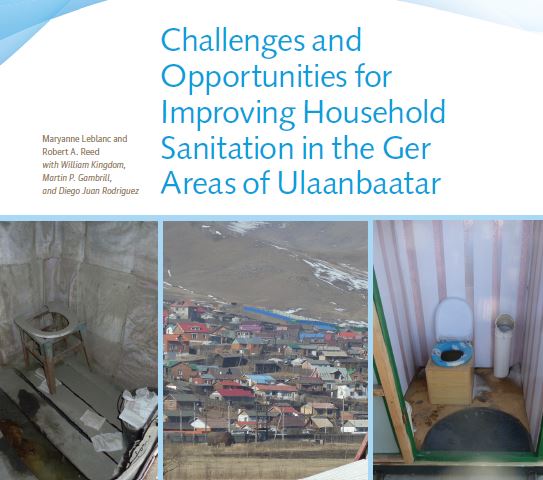Challenges and Opportunities for Improving Household Sanitation in the Ger Areas of Ulaanbaatar
Improving sanitation in the peri-urban Ger areas is a significant challenge. Today over 750,000 people depend on basic pit latrines and buy water at kiosks and transport it to their homes. The pit latrines frequently consist of a few planks over a collapsing pit. These facilities are often unpleasant, unsafe, and unhygienic, frightening for children, and accessible to rats, insects, and other vermin that spread fecal matter into the environment. Government plans to move people into denser housing served by piped water supply and sewerage networks will take time and considerable resources to implement. Even if the plans are fully implemented, 400,000 people would not be connected to municipal sewer services by 2030 (NJS Consultants 2013); therefore, other options must be developed if these people are to access safe sanitation services. In Ulaanbaatar, technical options for improving sanitation are limited, since many sanitation facilities and processes that work well in tropical or temperate climates would be prohibitively costly or complex to build or operate in the cold climate. For example, critical biological processes that break down excreta and other organic matter slow and stop as temperatures decrease, and liquid wastes cannot infiltrate into frozen soil, so provision must be made to contain all wastewater generated during the cold season. Sanitation, including on-site sanitation, should be considered as a system, not just a facility. The entire service chain needs to be considered, including management of the wastes from capture to containment to conveyance to treatment and potential reuse or final disposal. Otherwise, improper reuse or disposal of excreta poses a risk to public health and the environment.
